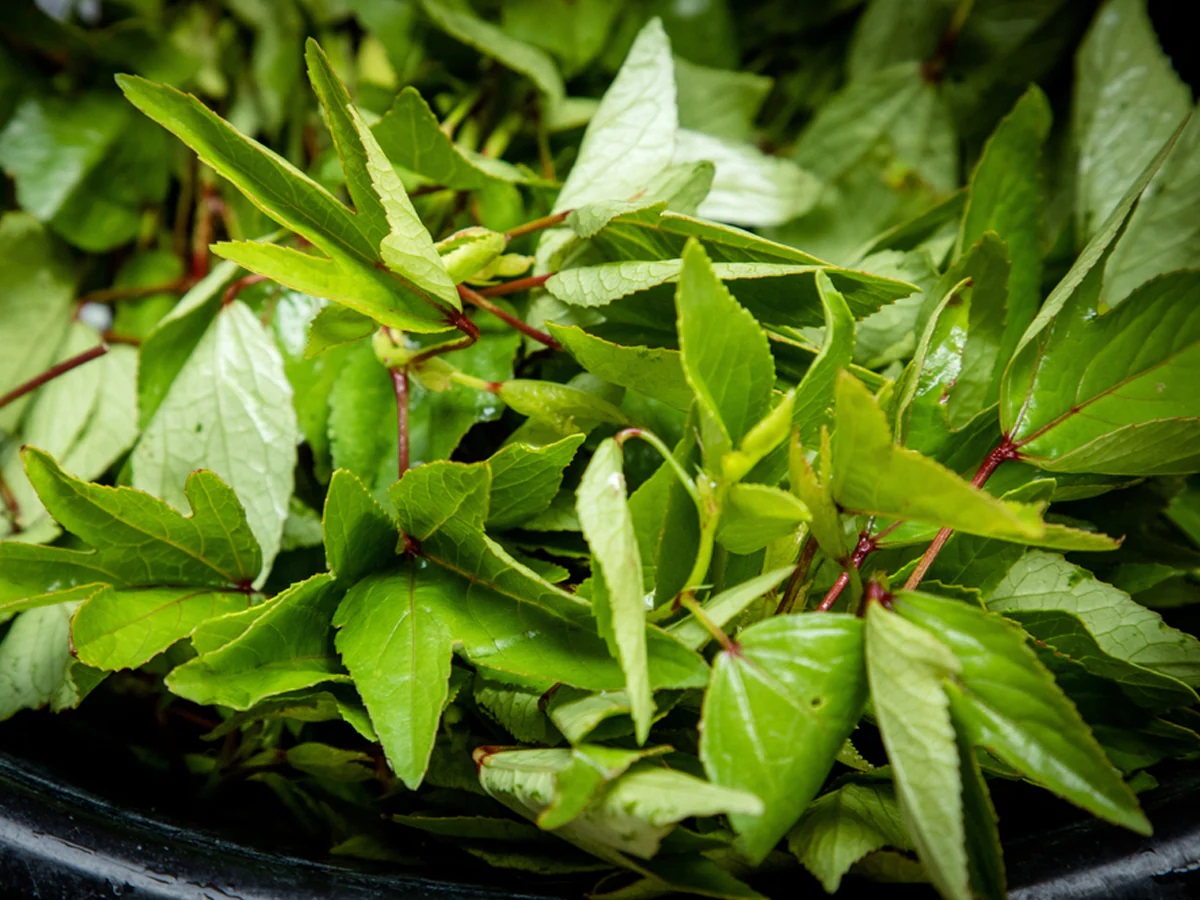
Gongura, also known as sorrel or Roselle, is a leafy green plant that packs a punch in both flavor and nutrition. Originating from India, this tangy leaf is a staple in many regional dishes, especially in Andhra Pradesh. But what makes Gongura so special? Gongura leaves are rich in vitamins, minerals, and antioxidants, making them a powerhouse of health benefits. They can be used in a variety of recipes, from pickles to curries, adding a unique sour taste that tantalizes the taste buds. Whether you're a foodie or a health enthusiast, learning about Gongura will surely spice up your culinary adventures. Ready to dive into some intriguing facts about this versatile leaf? Let's get started!
Key Takeaways:
- Gongura, also known as sorrel or roselle, is a leafy green plant with a tangy flavor. It's packed with vitamins, iron, and antioxidants, making it great for your health.
- Gongura is not just tasty, it's also versatile in the kitchen. It's used in traditional dishes like chutney, lentil curry, and chicken curry. It's also easy to grow at home in warm climates.
What is Gongura?
Gongura, also known as sorrel or roselle, is a leafy green plant widely used in Indian cuisine. It has a unique tangy flavor that makes it a favorite in many dishes. Let's dive into some fascinating facts about this versatile plant.
Nutritional Benefits of Gongura
Gongura is not just tasty; it's packed with nutrients that can benefit your health in various ways.
- Rich in Vitamins: Gongura leaves are loaded with vitamins A, B, and C, which are essential for maintaining good vision, energy levels, and immune function.
- High in Iron: This leafy green is a great source of iron, making it beneficial for those with anemia or low iron levels.
- Calcium Content: Gongura contains a significant amount of calcium, which is crucial for strong bones and teeth.
- Antioxidants: The plant is rich in antioxidants that help fight free radicals, reducing the risk of chronic diseases.
Culinary Uses of Gongura
Gongura's unique flavor makes it a popular ingredient in various dishes, especially in South Indian cuisine.
- Gongura Pachadi: A traditional chutney made from gongura leaves, often served with rice or roti.
- Gongura Pappu: A lentil dish that combines gongura leaves with dal, creating a tangy and nutritious meal.
- Gongura Chicken: A spicy and tangy chicken curry that incorporates gongura leaves for an extra kick.
- Pickles: Gongura leaves are often used to make tangy pickles that can be stored and enjoyed over time.
Gongura in Traditional Medicine
Beyond its culinary uses, gongura has been used in traditional medicine for centuries.
- Digestive Aid: Gongura is known to aid digestion and can help alleviate stomach issues.
- Anti-inflammatory Properties: The plant has anti-inflammatory properties that can help reduce swelling and pain.
- Skin Health: Gongura leaves are sometimes used in topical treatments for skin conditions due to their soothing properties.
Growing Gongura
Interested in growing your own gongura? It's easier than you might think.
- Climate: Gongura thrives in warm climates and can be grown year-round in tropical regions.
- Soil Requirements: The plant prefers well-drained soil rich in organic matter.
- Watering: Regular watering is essential, but be careful not to overwater as it can lead to root rot.
- Harvesting: Gongura leaves can be harvested multiple times throughout the growing season, making it a sustainable choice for home gardens.
Gongura: A Tangy Treasure
Gongura, with its distinct tangy flavor, is more than just a leafy green. It's a nutrient powerhouse packed with vitamins A, C, and iron. This versatile plant finds its way into various dishes, from pickles to curries, making it a staple in many Indian kitchens. Its medicinal properties are noteworthy too, aiding in digestion and boosting immunity. Whether you're a seasoned cook or a curious foodie, incorporating gongura into your meals can be a delightful adventure. Remember, fresh leaves offer the best flavor, so grab some from your local market. Experiment with different recipes and enjoy the unique taste and health benefits this leafy green brings to your table. Gongura isn't just food; it's a culinary experience waiting to be explored. Happy cooking!
Frequently Asked Questions
Was this page helpful?
Our commitment to delivering trustworthy and engaging content is at the heart of what we do. Each fact on our site is contributed by real users like you, bringing a wealth of diverse insights and information. To ensure the highest standards of accuracy and reliability, our dedicated editors meticulously review each submission. This process guarantees that the facts we share are not only fascinating but also credible. Trust in our commitment to quality and authenticity as you explore and learn with us.


